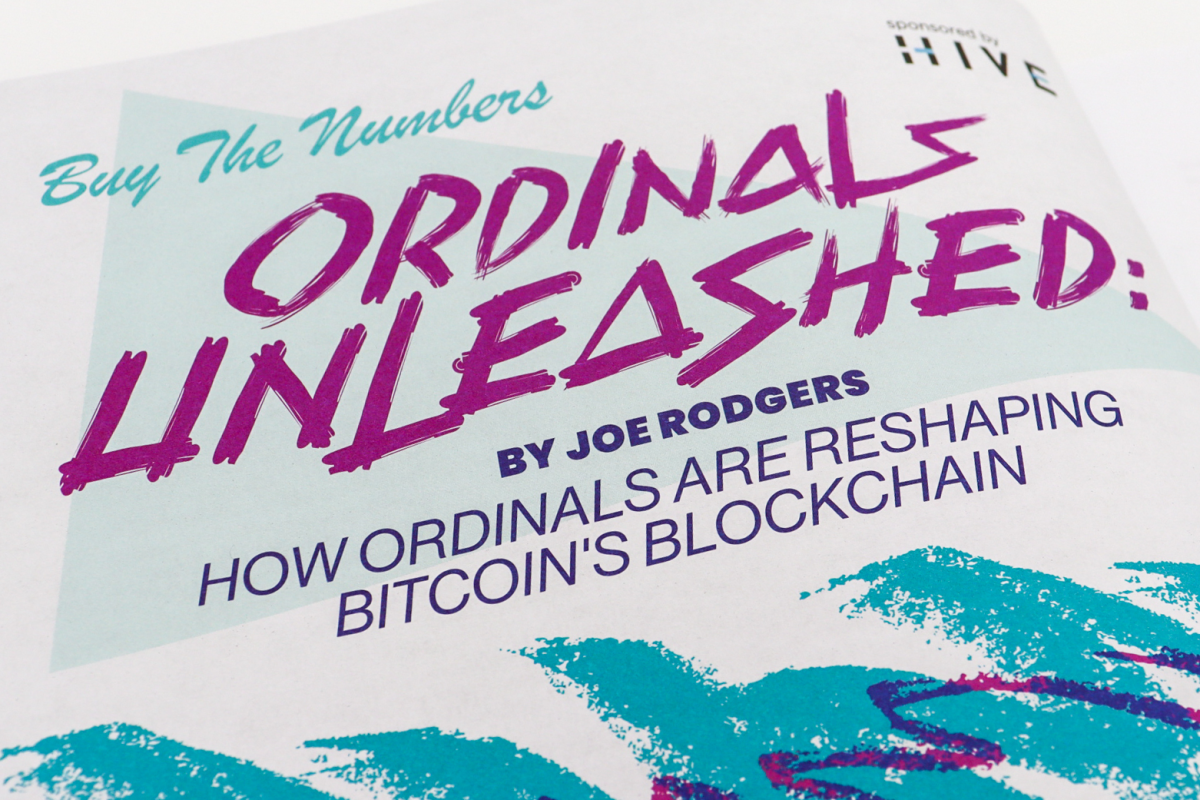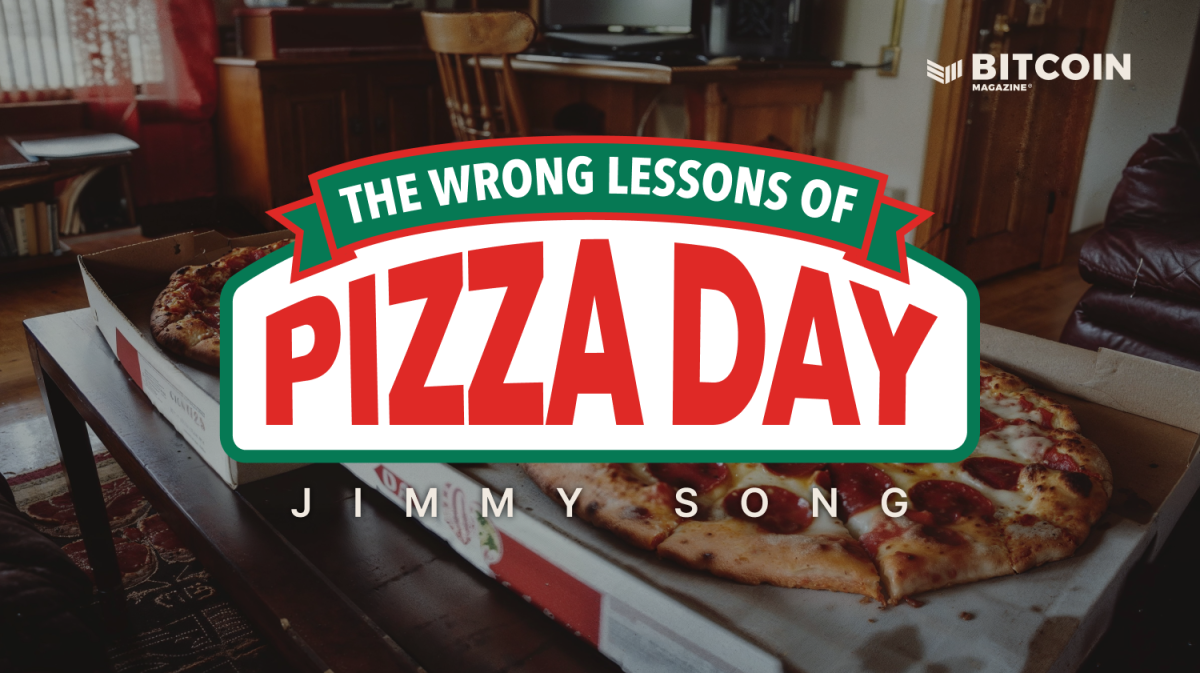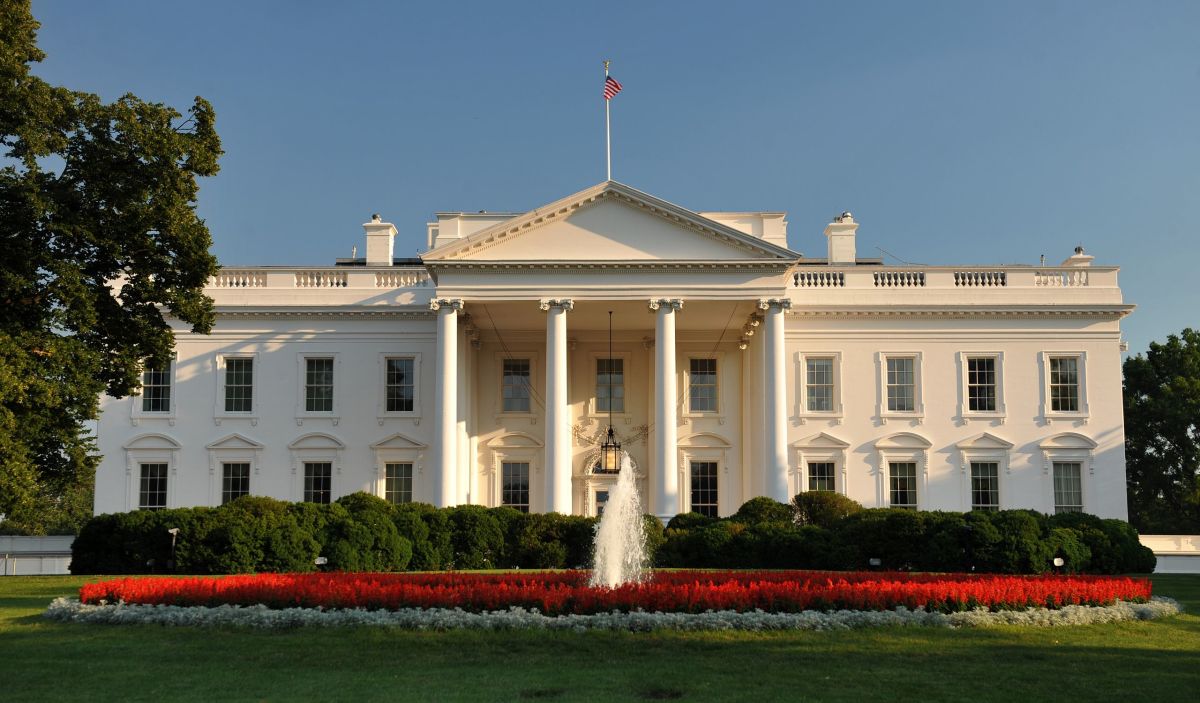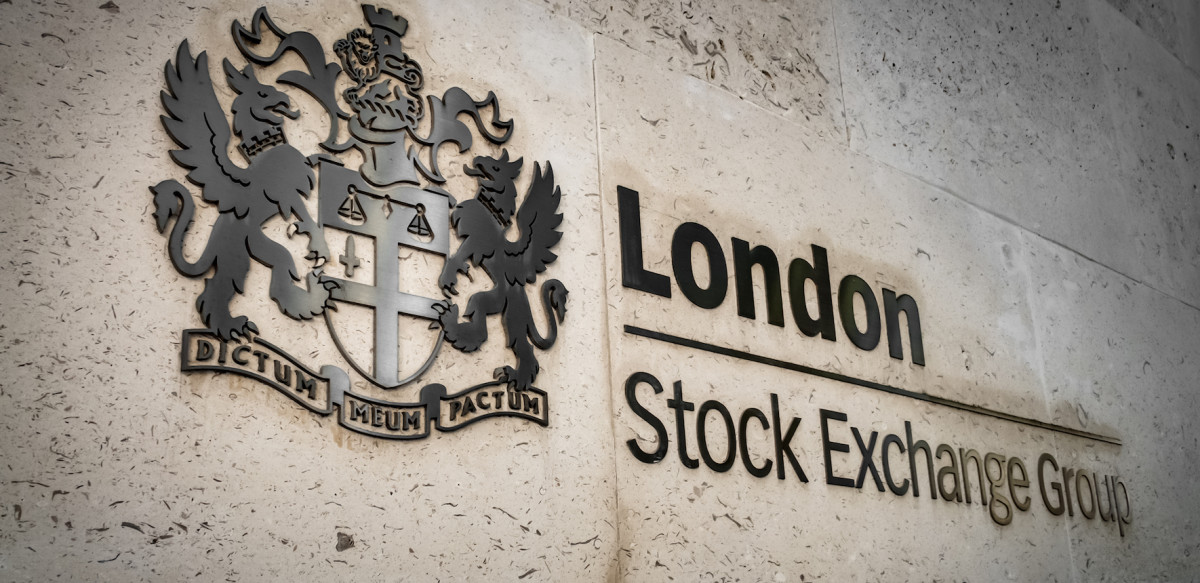Month: May 2024
Sterling holds steady amid UK election announcement
Post Content
Argentine black market peso hits record low as Milei rally falters
Post Content
Dollar higher against euro as Fed minutes support
Post Content
Yen slide beyond 155 is a pain point for half of Japan firms, Reuters survey shows – Reuters poll
Post Content
Asia FX weakens as Fed minutes brew rate fears, boost dollar
Post Content
Ordinals Unleashed: How Ordinals Are Reshaping Bitcoin’s Blockchain
This article is featured in Bitcoin Magazine’s “The Inscription Issue”. Click here to get your Annual Bitcoin Magazine Subscription.
Bitcoin, Not Blockchain
Bitcoin, not blockchain. This has been a prominent meme throughout the past two epochs, guiding noobs towards a Bitcoin-only way of life, away from the fraudulent “cryptos” promising greater “blockchain tech”. Yet, here we are, more focused than ever on the blockchain. But this time it’s different: The whole world has a laser-eyed focus on the Bitcoin blockchain. The driving force for this attention is a new meta protocol — a protocol that rides on top of the Bitcoin protocol — called Ordinals. Ordinals is a novel approach to “naming” individual satoshis from the Bitcoin UTXO set, but perhaps more interestingly, it includes a way to “inscribe” data files into the Bitcoin blockchain. This article provides an analysis of how Ordinals have influenced demand for blockspace on the Bitcoin blockchain in 2023, and explores the challenges and opportunities this development presents.
Click the image above to subscribe!How the rise of ordinals are changing the use and economics of Bitcoin blockspace. From “The Inscription Issue.”
Technical Overview of Ordinals
Ordinals is a protocol that’s bolted on top of the Bitcoin protocol. It is made of two distinct parts: Ordinal Theory and inscriptions. Ordinal Theory is a protocol for assigning serial numbers to satoshis, the smallest subdivision of a bitcoin, and tracking those satoshis as they are spent by transactions. This has led to some controversial conversations about fungibility as the market might assign greater value to one satoshi over another, but the market is gaining interest in this part of the Ordinals protocol. The second, and primary focus of this article, is on inscriptions. Inscriptions allow for attaching arbitrary content to individual satoshis, turning them into Bitcoin-native digital artifacts. Perhaps the easiest example to explain inscriptions would be inscribing (saving) a photo to the Bitcoin blockchain (a big storage hard drive or database) and assigning that photo to a single bitcoin satoshi. That single satoshi shows when the inscription was inscribed to the blockchain, and that inscription, or that single satoshi representing the photo, can then be transferred from one person to another. Many people do not see value in the collection or trading of these inscriptions and some go so far as to call inscriptions “spam” or a “denial of service attack” on Bitcoin, but a new market has emerged out of the Ordinals protocol and this year has shown meaningful influence on the shape, demand, and cost of blockspace. What’s more interesting are the possibilities that inscriptions bring to Bitcoin, some of which we will discuss further while many have not yet been imagined.
As Ordinals went from a whitepaper at the end of 2022 and well into production in 2023, we have seen a measurable increase in the growth rate of the Bitcoin blockchain. In February this year, you can see the trajectory for daily blockchain growth make a noticeable change. It’s important to note block size has not increased, rather more blockspace is being used each day. Blockspace is limited by code in the Bitcoin protocol at around ~4 MB per block. This chart shows us that in February 2023, there was a big uptick in blockspace usage.
Zooming in on the chart, you can see in February 2023 where the average block size ramps up in a meaningful way, which is attributed to widespread usage of the Ordinal protocol. We will dig into the blockspace a bit more in the next section, but the key takeaway is that the trajectory of blockspace growth has increased and this new demand does not appear to be going away anytime soon.
Analysis of Blockspace Demand
The advent of Ordinals has impacted the market demand of a limited supply of blockspace via inscriptions. These inscriptions take up bytes in each block, and those people who are inscribing inscriptions pay the dynamic market rate for that space. Since Ordinals was not yet a thing in 2022, we only saw demand for blockspace from “economic” transactions. Now with Ordinals live, we see “economic” transactions compete with inscriptions for blockspace. Since blockspace is scarce, only so many bytes — and thus transactions — can be included in each block. With inscriptions now demanding more of that space, the free market for blockspace is doing its thing and markets are clearing every 10 minutes or so.
As we dig further into the impact of inscriptions on the economics of Bitcoin’s blockspace, we will first dig into the blockspace demand in 2023. As mentioned before, Ordinals only began in 2023, so it is easy to see how these transactions have begun taking up space in blocks.
In February, you can see where Ordinals begin to have a significant footprint on blockspace. In the month of January, we saw an average of 0.5 MB of daily inscriptions added to the blockchain, but February through the rest of the year saw an average of 85 MB of inscriptions added per day.
Economic Impact
The economic implications of Ordinals are significant, particularly in the context of transaction fees and miners’ revenue. An analysis of transaction fees in 2023 illustrates a rising trend, impacting users and miners alike. Miners, in particular, have seen a notable benefit from this increase, as higher fees translate into greater revenue. In fact, over the past few years we have heard calls for the impending failure of Bitcoin if fees do not increase in a meaningful way, and with the Ordinals innovation we have seen fees increase substantially. During January 2023, we saw an average of 12.97 BTC paid in fees per day with 0.005 BTC being generated from inscriptions. But from February through November 15, we saw an average of 44.22 BTC in fees per day, a 240% increase, with 8.67 BTC of that being from inscriptions.
Considering total new bitcoin mined each day is currently around 900 BTC, total transaction fees make up only 4.5% of miners’ revenue. While this is not enough revenue to move the needle for small-to-midsize miners, this is significant for industrial-scale miners who have the added advantage of lower power costs due to buying at scale. You can see a direct correlation to hashprice and transaction fees, specifically in May 2023. The rest of the chart does not show an exact correlation, mainly because hashprice is a function of BTC priced in USD and total network difficulty. We know that as mining becomes more profitable, additional miners are turned on to take advantage of the increased revenue, and this year has seen explosive growth in mining difficulty growing from 252 EH/s in January 2023 to 457 EH/s in November 2023 — an 81% increase in just under a year.
Future Outlook and Implications for the Halving
As we approach the halving in April 2024, it will be interesting to see what happens to blockspace dynamics as the daily mining supply is cut in half. How will a hypothetical run-up in the price of BTC make sats that much more precious? Will we see continued demand for inscriptions, or will it become too costly in USD terms? Other things to consider are the emergence of new data markets within the Bitcoin ecosystem which have the potential to bring new applications and future uses of Bitcoin blockspace, going beyond traditional transactions and inscriptions. The potential of Ordinals to store diverse data types and the development of marketplaces for this data opens exciting possibilities for the future, ranging from digital art storage to complex data applications, signaling a new era in Bitcoin blockspace utility.
What’s exciting to ponder is what happens to the fees and subsidies leading up to and beyond the 2024 halving. Earlier we saw that if you average daily revenue from transaction fees plus inscription fees, it equals around 4.5% of miners’ daily revenue. But what happens to that post-halving? And what happens if we lived in a vacuum and kept fees flat into the 2028 halving?
If we continue at the current clip, you see that transaction fees become much more important to mining revenue after the fourth halving and carry significant value in the 2028 post-halving environment. It is hard to imagine blockspace demand staying flat through two halvings, and using current demand is quite conservative. This also discounts the invention of new ways to use blockspace which we have not yet even imagined.
Markets Clear
In closing, the emergence of Ordinals inscriptions has fundamentally reshaped the Bitcoin blockchain, marking a significant shift in both its technical landscape and economic dynamics. As we delve deeper into this new world of Bitcoin evolution, we must consider the broader implications of Ordinals and new uses of blockspace and their potential impacts. With the upcoming halving poised to introduce new supply complexities, the role of Ordinals in shaping Bitcoin’s future becomes even more interesting. From my perspective, this is a thrilling chapter in the blockchain saga, filled with uncharted territories and immense possibilities. This isn’t about JPEGs; this is about a censorship-resistant free market. As the Bitcoin protocol continues its evolution, it remains to be seen how the market will adapt to these changes and what other novel uses of blockspace will emerge. One thing is clear: The journey ahead is going to be unpredictable and weird. But at the end of the day, markets clear.
This article is featured in Bitcoin Magazine’s “The Inscription Issue”. Click here to get your Annual Bitcoin Magazine Subscription.
The Wrong Lessons of Pizza Day
The following is an excerpt on Bitcoin Pizza Day from “Fiat Ruins Everything” by Jimmy Song. Visit the Bitcoin Magazine Store to order a print, digital or audio copy of the book.
Pizza Day is often viewed with a sense of regret.
The well-known story goes like this: many years ago, Laszlo Hanyecz bought two Papa John’s pizzas, and in return, some fortunate person received 10,000 BTC.236 This tale resembles that of Peter Minuit purchasing Manhattan Island for a mere $24. It’s hard to believe such a transaction took place, considering the current value.
The story has several intriguing aspects. It marked the first real-world good or service purchased with Bitcoin. It also established Bitcoin’s price; since the two pizzas cost around $41, one BTC was approximately $0.0041.
Another aspect of this narrative is Laszlo, a pioneer in mining Bitcoin using GPUs (graphics processing units).237 He spent around 100,000 BTC on pizzas, as he made similar deals multiple times throughout the month. In a way, he’s the Santa Claus of this story, giving away value almost flippantly.
Rent-Seeking Fantasies
Pizza Day often triggers daydreams of becoming a Bitcoin billionaire through a single brilliant trade. Many people don’t fantasize about being Laszlo, as they aren’t GPU programming experts. However, they can easily imagine being the person on the bitcointalk forums offering to buy Bitcoin for a couple of pizzas.
The idea of having made such a trade sparks envy, as we all secretly resent the person who actually executed it. We perceive them as lucky, as if they had won the lottery.
These fantasies stem from a fiat mentality, where the value hierarchy is rooted in fiat money. The desire is to be lucky rather than skilled. People would prefer making money without working, versus earning it by providing valuable goods and services.
It’s revealing that the regret lies in missing out on luck rather than innovation. In a fiat-driven world, it’s easier to dream about being the person who sold the pizza, rather than the one who had the skill and foresight to mine with GPUs. This mindset prioritizes fiat accomplishments—getting lucky with money—over real achievements, which involve earning money by providing value to the market. Most people would rather ride the coattails of an innovator than be one themselves.
Bitcoin Regret
We all have our Bitcoin regret stories. I remember learning about Bitcoin in February 2011. I tried to find a way to buy it using a credit card, but I couldn’t. I attempted mining on Amazon Web Services and didn’t find any blocks solo-mining for two days. I began the process of moving dollars into Mt. Gox, but when the price dropped from $1 to $0.90, I decided it was too much of a hassle to set up. I could have bought Bitcoin at $0.90, but I didn’t. It’s one of the biggest regrets of my life.
Everyone has different regret stories. Perhaps you heard about Bitcoin back in June 2011 when it ran up to $30 and regret not buying it then. Maybe you discovered Bitcoin in April 2013 when it reached $266, or later that year in December 2013 when it soared to $1,100. Or perhaps it was in 2017 when it hit $2,500, $5,000, and then $19,000. Or even more recently, in March 2020 when Bitcoin crashed to under $4,000, or later that year when it was breaking $10,000. Anyone who’s heard about Bitcoin at any point in its history has a regret story.
Bitcoin regret stories are like bad-beat stories in poker. Everyone has them, and they are fantasies about different, luckier outcomes. They are unproductive stories because the feelings of regret come from a fantasy that assumes virtues that are not common.
The Challenge of Holding
In these regret stories, we often overlook something. What if we had bought Bitcoin when we first heard about it? How would we have handled the subsequent challenges? Would we have had the diamond hands to hold through the 85% drawdowns in 2011, 2013, 2014, and 2018?
When you fantasize about the Pizza Day story, do you ever consider the difficulty of holding during the tough times in 2011, 2013, 2014, and 2018? There’s a tendency to assume that we would have had the conviction that we possess now, like how a time traveler might feel. I’ve experienced those drawdowns firsthand, and let me tell you, most people didn’t have that conviction, and they sold. Many believe they would have held strong through all the difficult times, but like the original O.J. Simpson verdict, that assumption goes against all evidence.
Holding 10,000 BTC wasn’t uncommon back in 2010. Many people had a significant amount of Bitcoin because they were worth pennies at the time, but where are they now? Most of them sold when the Bitcoin price doubled or tripled and never looked back.238 They viewed Bitcoin as a plaything and didn’t grasp its revolutionary nature. So, they sold it to buy a new computer, a new bike, or a new car.
Click here to order a copy of “Fiat Ruins Everything: How Our Financial System is Rigged and How Bitcoin Fixes It”, by Jimmy Song.
Shattering Your Dreams
Had you sold Laszlo two pizzas for 10,000 BTC in 2010, you probably would have sold them in the new few years. To think otherwise is hubris. Most people back then didn’t understand what Bitcoin was, and there were no educational resources explaining why you should hold. We now have an abundance of resources for understanding Bitcoin.239 In 2023, it’s much easier to comprehend that Bitcoin is a better form of money than anything that came before. Back in 2010, it was much more difficult. Do you still think you would have had diamond hands?
To hold Bitcoin is to have a deep conviction about what it is. There are necessary virtues to be a long-term holder. Holders understand the fundamental value of Bitcoin being sound money and can thus withstand the 85% drawdowns that occur regularly. Only the truly extraordinary managed to hold from 2010, and you likely would not have been one of those people.
But suppose you beat the odds and had conviction. You held through 2011 and even the first bubble in 2013. Would you have had the foresight to withdraw to your wallet before Mt. Gox collapsed in 2013?240 Or if you used another exchange before then, would you have gotten out before they exit-scammed?241 We say “not your keys, not your coins” now, but back then, this was not common practice. Many people had to be burned for that lesson to become a meme. Even with conviction, there’s a good chance you would have been one of the many who suffered.
There were also other dangers, like the advent of altcoins starting in 2011. How many Bitcoins would you have lost in Geistgeld,242 Feathercoin,243 and MasterCoin?244 There were also numerous scams, including Pirate40245 and others who promised high returns by running Ponzi schemes. Would you have avoided those? There were also several ASIC startups that sold machines that weren’t built yet. Would you have avoided getting duped by Butterfly Labs246 or TerraMiner?247 How about the cloud mining services248 that took your Bitcoin and paid out only a fraction over the next 12 months? Would you have avoided these tempting offers that ended up diminishing many Bitcoin stacks? You would have needed the instinct to get in on Bitcoin early while not falling for these similar-sounding investments, which frankly is not an easy needle to thread.
Looking back on those dangers, it’s a miracle that people made it past those years with any Bitcoin at all. Many OGs are like Vietnam veterans, reflecting on the times when they were fortunate to escape the numerous hazards.
Building Conviction Is Challenging
Developing deep conviction is not easy, and for early adopters, it was especially difficult. Remember, everyone was calling Bitcoin a scam back then. Even now, it takes years of study and unwavering resolve to develop that conviction. Back in 2010-2013, having Bitcoin conviction was as rare as a physically-fit government health official.
Going against conventional wisdom and following your convictions requires a great deal of courage, which many people lack. Consider what happened during COVID-19. How many people had the conviction to voice opinions against the mainstream narrative in March 2020? That’s the level of conviction you had to possess to hold Bitcoin through those early years.
In 2023, we have numerous resources that help us save in Bitcoin. Podcasts, books, and videos are available to help us navigate this space, not only to develop the conviction but also to adopt best practices for holding. The early years were a minefield of traps to lose your Bitcoin. It’s much easier these days to avoid those traps, but back then, there weren’t OGs who could warn you about them. The resources that exist now and the Bitcoin memes we have today (“Not your keys, not your coins.”) are not propaganda. They are the fruit of hard-earned experience.
Bitcoin Derangement
Studying the early individuals in the Bitcoin space reveals a troubling pattern. Almost every non-technical Bitcoin advocate pre-2013 is now promoting an altcoin. Why have so many early adopters become Bitcoin-deranged?
We can find some answers by looking at the fiat world of lottery winners. Years after winning, numerous lottery winners end up worse off than before they won the lottery. They are ill-equipped to manage the windfall, and many find themselves with greater debt, damaged relationships, and a worse life. Some even commit suicide. While not everyone experiences such negative outcomes, enough do that many lottery agencies proactively offer assistance.
Unfortunately, bad outcomes have been the fate of many early Bitcoin adopters. At some point in the last decade, they either fell victim to scams or became scammers themselves. As a result, many of them have turned against Bitcoin.
So, to further shatter your daydream, there’s a good chance that if you had gotten in early, you would be an altcoin scammer or would have been scammed by an altcoin. These are serial scammers with no qualms about lying, cheating, or stealing their way to wealth. They exist in a rent-seeking nightmare of shattered dreams. That’s not a desirable fate, and it’s something I wouldn’t wish on my worst enemy.
Level Up Your Convictions
For many, Pizza Day is an opportunity to indulge in time-traveling fantasies where they daydream about being wealthy. This mindset often leads people to explore altcoins, as it stems from the fiat money mentality. Essentially, Pizza Day is a fantasy about being lucky and not having to work. In other words, it represents a rent-seeking desire on a grand scale.
Fiat money has fostered a consumerist mentality, which exacerbates the urge to rent seek. Governments capitalize on this desire through lotteries, profiting from the allure of easy wealth. Altcoins exploit the same yearning. Unfortunately, Pizza Day often reinforces this mentality, focusing on the desire to be fortunate rather than skilled.
Instead, Pizza Day should serve as a reminder that forming conviction is no easy task. True conviction demands knowledge, wisdom, and courage—virtues that require time, energy, and effort to develop. Rather than envying early adopters and fantasizing about joining their ranks, we should strive to cultivate the conviction needed to hold through challenging times and provide value in the process. As the saying goes in the Bitcoin community, “It’s still early.”
On Pizza Day, commit to leveling up your convictions.
TEN THINGS YOU BOUGHT INSTEAD OF BITCOIN
– 1-
That sleek, irresistible Apple gadget you just had to have, only to replace it two years later with an even shinier, more irresistible version.
– 2 –
Green gems in Clash of Clans, because clearly, the defense of your virtual village was of greater importance than securing your financial future.
– 3 –
A college degree with about as much relevance to your current job as a penguin waddling through the Sahara Desert.
– 4 –
Litecoin, the less secure, less functional cousin of Bitcoin— because who needs the real deal when you can settle for something much worse?
– 5 –
A dating app subscription that merely solidified your status as forever alone.
– 6 –
Steam games on sale, eagerly awaiting their debut in your library, wondering when they’ll finally bask in the glow of your screen.
– 7 –
That exercise equipment now serving as an exquisite clothes rack, because let’s face it, the allure of the couch is simply too strong to resist.
– 8 –
An online class you signed up for, attended just long enough to say “hello” and “goodbye,” then promptly ghosted.
– 9 –
The, uh, “adult entertainment” that left you feeling deflated and questioning your life choices the next day.
– 10 –
An MLM product from a Facebook friend that you abandoned quicker than you can say “pyramid scheme.”
Click here to visit the Bitcoin Magazine store to order a print, digital or audio copy of “Fiat Ruins Everything” by Jimmy Song.
White House Eager To Work With Congress On Crypto Framework Bill
Today, the Executive Office of the United States President Joe Biden issued a Statement of Administration Policy on legislation H.R. 4762 – Financial Innovation and Technology Act 21 (FIT 21), which aims to create clear guidelines for digital assets.
JUST IN: 
— Bitcoin Magazine (@BitcoinMagazine) May 22, 2024
“The current regulatory environment in the U.S. has created uncertainty and driven business overseas, stifling innovation and resulting in a loss of jobs and investment,” said The Chamber of Digital Commerce, an American advocacy group that promotes the Bitcoin industry in DC. “The FIT for the 21st Century Act addresses these issues by creating clear guidelines for the classification, trading and regulation of digital assets, ensuring consumer protection.”
With FIT 21 expected to pass the House in a vote today, the Biden admin will reportedly not issue a threat of a veto if passed, like it did earlier this month regarding another crypto related bill, which would allow highly trusted financial institutions to custody Bitcoin and other digital assets. If passed, FIT 21 would then be voted on in the Senate.
However, the Biden Administration said that it currently opposes the passage of FIT 21, and wants to work with Congress on a resolution. The White House says the bill in its current form lacks the necessary consumer and investor protections for those participating in this growing market.
“The administration is eager to work with Congress to ensure a comprehensive and balanced regulatory framework for digital assets…which will promote the responsible development of digital assets and payment innovation and help reinforce the United States leadership in the global financial system,” The White House stated today.
Previously, the Biden Administration has acted hostile towards the Bitcoin and broader crypto industry, such as Biden’s veto threat on a bill earlier this month mentioned above, in addition to reports by Congressmen saying Biden is in favor of a central bank digital currency over a decentralized currency like Bitcoin.
But now that Biden’s political opponent, Donald Trump, is embracing Bitcoin and crypto and gaining donations from it, Biden’s Administration appears to be reversing it’s stance on the matter.
The result of the FIT 21 voting in the House today will be posted on Bitcoin Magazine’s X account later today.
OP_CAT and the Infinite Nothing
Introduction
You may have heard about re-enabling OP_CAT as a potential upgrade for bitcoin’s script language. Depending on where you get your news OP_CAT has been called “only 10 lines of code”, “the best way to enable experimentation with covenants”, “too powerful”, “dangerous and leading to miner centralization”, or “guaranteed to lead to a contentious soft fork”. I’m going to make the case that all of these perspectives are mistaken. OP_CAT is very useful, can be used as a covenant, and not (alone) the best next move for bitcoin. Nothing more, and nothing less.
To make that case, I’m going to explore several (apparently disjoint) topics, some of which were new to me a few short months ago. I’m going to try and arrange this in a way that provides the necessary background in one place.
How and What OP_CAT Does
Introspection with CAT
Let’s tackle the burning question that many have when first exposed to OP_CAT. How can a few lines of code that combine two items from the stack into one (A B CAT -> AB) possibly enable anything interesting? Andrew Poelstra has eloquently explained in recent interviews, and I posted a silly and brief explanation:
Bitcoin is a bit weird, so it can also split things. Then SHA256 lets us undo hashes. Then because cryptography is just math and we know how to grind, CAT lets us extract a hash from a signature verification. And as a result we can inspect anything hashed inside a signature…
— Rearden 

Because bitcoin script is strictly a verification language, each opcode can be used in forward or reverse. A script can be given a hash and require a preimage, or given a preimage and require a hash using OP_SHA256. This insight gives us the first two parts of how OP_CAT covenants work.
If a bitcoin script could get access to a hash of the transaction it’s verifying, it could require that the spend stack provide the hash preimage, split in whatever way the script requires, and then validate any particular part of that preimage. This is exactly what a covenant is – validating a part of the transaction spending some bitcoin.
That’s great, but bitcoin doesn’t have an opcode like OP_TXHASH to give the script access to the transaction’s hash. Here, we take advantage of the BIP340 Schnorr signature verification equation to require that the user provide the hash. If the user provides a value that will be a valid transaction hash if the script concatenates the byte 0x00 to the end of it, that value will also be a part of a valid BIP340 signature (with certain other parameters fixed) if the script concatenates the byte 0x01 to it.
Combining these techniques, enables OP_CAT to check any part of its spending transaction that can be signed, and even to look back at its parent transactions in some limited ways. With some careful codecraft, one can build Purrfect Vaults, CatVM, and more.
Other uses for CAT
But we shouldn’t. Building these things with OP_CAT results in difficult to maintain abominations. Instead, we should use OP_CAT for what it’s good for, and there’s plenty of that: It enables the equivalent of OP_CHECKSEPARATESIG, checking Merkle inclusion proofs, combining data for signature verification with OP_CHECKSIGFROMSTACK, and more.
Problems with CAT
Now that we know what CAT does, what’s the problem? Why have people (myself included) said that it’s a dangerous beast? Using the introspection technique described above, CAT enables two specific constructions: Hashrate escrows, and (supposedly) automated market makers (AMMs). Until recently, both of these were considered significant risks of bringing centralizing MEV to bitcoin.
MEV, MEVil and Miner Centralization
The term MEV (Miner Extractable Value) is a bit confusing. In the plainest interpretation it would include transaction fees, which of course we want paid to miners to help ensure the security of bitcoin long into the future. MEV is generally used to mean additional value that miners can extract from their blocks beyond the fees visible on the public relay network. This could come in the form of out of band payments, miners participating in contracts and reordering transactions in ways that favor themselves, or even outright theft of goods and services by miners mining blocks that reorg and double spend a confirmed payment to a merchant. All of these forms of MEV can be considered generally bad for the participants in the network, as the miners are using their position in the network to their own benefit at the expense of other network participants. However, MEV alone does not present a systemic problem by driving miner centralization, only a local problem for the specifically impacted participants.
MEVil is a term that is sometimes used for MEV which drives miner centralization – I prefer the term centralizing MEV and will use it going forward. Several things are necessary to change MEV into centralizing MEV:
It must be sufficiently difficult to extract that an open source block template builder cannot reasonably extract itThe total value extractable must grow with a miner’s bitcoin hash rateThe extractable value must justify the cost of extraction
If all of these requirements are met then only a sufficiently large miner will have the incentive to begin extracting the MEV. Once they do, they will be able to outpace their smaller peers’ growth thanks to the additional revenue extracted. The more costly the MEV is to extract (up to the point where it is not worth it for any miner) the worse the centalizing pressure it creates.
Avoiding centralizing MEV then is (in a sense) simple: Ensure that whatever opportunities for MEV exist on bitcoin are either so easy to extract that everyone does it or cost more to extract than they’re worth (either because they’re so small or because they’re so costly).
For more information, check out @TheBlueMatt‘s recent post.
Hashrate Escrows (née Drivechains)
Many years ago (before the Lightning Network or ideas like Ark, Timeout Trees, roll-ups, BitVM, or CatVM) sidechains were considered the ultimate scaling solution for bitcoin. The idea was conceptually simple: bitcoin blocks must stay limited in size for all the usual decentralization reasons, but we can attach sidechains to bitcoin and those can have faster blocks, bigger blocks, more computation, or whatever. In practice, however, implementing sidechains was not so easy. Bitcoin’s final settlement is fundamentally tied to proof of work, an unfalsifiable cost to reorder transactions, how does a sidechain inherit that? Also, how can bitcoin be transferred to and from the sidechain? The best known proposal to answer these two questions is called Drivechains (BIPs 300 and 301). I won’t bore you with the details of Drivechains, but suffice it to say, there are only two outcomes of such sidechain systems: Either they are relatively unused (and therefore useless) or they are widely used and become a de facto block size increase for bitcoin. A de facto block size increase of this sort is a form of centralizing MEV where only larger miners will be able to cost effectively participate in the additional revenue opportunities offered by the potentially large and complex sidechain blocks.
Hashrate escrows, which can be built with OP_CAT, are one small part of the Drivechains proposals. This is a system of restricting withdrawals from sidechains by using a counter whose value can only be changed by miners, starts at a high value, and must reach zero before a sidechain withdrawal can be processed. This is claimed to be a “trustless” transfer out from a sidechain, but actually creates a federation of miners with control of all bitcoin held in sidechains.
Since the development of the Drivechains proposals, it has become (to our detriment) common to refer to any proposal which can be used to create a withdrawal predicated on a miner-controlled counter as “Drivechains”. Hopefully it clear at this point why this inappropriate shorthand is unhelpful – Drivechains are either worthless or dangerous, but hashrate escrows are merely a way to transfer control the outcome of some transaction to the implicit federation of miners.
Tokens and AMMs
Tokens
For reasons that will never be entirely clear to me, humans love a good token (or a bad token or really just tokens). Nearly from the beginning of bitcoin there has been talk of how to embed other tokens into the protocol, from Colored Coins and Counterparty, to the more recent Taproot Assets and Runes. All of these protocols have one thing in common: They require an external index of bitcoin transactions that either has knowledge of external data or processes data from the sequence of bitcoin transactions in order to determine the transformations of tokens within the protocol. The salient point for this article is that bitcoin locking scripts are completely unaware of the existence of the tokens, and even bitcoin nodes that validate transactions are unaware of the tokens (i.e. even if a bitcoin locking script had full access to the complete bitcoin UTXO set, it could not discover the state of any of these tokens).
Automated Market Makers (AMMs)
On other blockchain systems it is common for contracts known as AMMs to be used to (for example) peg the ratio between two tokens by buying and selling at a fixed price. The rules that can be encoded in an AMM are beyond the scope of this article. Suffice it to say that AMMs create huge opportunities for MEV and because of the private exchange relationships needed to maximize the returns on that MEV also centralizing MEV. This has often been used as an argument against building more expressive bitcoin scripts – we genuinely do want to avoid exposing the bitcoin network to the vagaries of centralizing MEV. However, as I’ve described above there simply is no practical way for bitcoin scripts, no matter how expressive, to evaluate the state of any token other than bitcoin. Bitcoin scripts cannot locate a rare sat. They can’t find a Rune balance. They can’t identify a Taproot Asset.
Without access to any information about the disposition of non-bitcoin assets, the entire concept of a bitcoin script based AMM ceases to make sense. Token locations can be attested to by a signature from an oracle, but oracle attestations do not make an AMM. They can be used to facilitate specific manual trades, but not a durable automated system. Moreover, such an oracle-based system could be built today with no changes to bitcoin.
Conclusion
As you can hopefully see, CAT is not such a frightful beast. It’s not really much of a beast at all. It has neither infinite capability nor magical powers. It’s just a little opcode that can be very helpful. The one thing we probably want to avoid is activating OP_CAT without another way to do transaction introspection, such as OP_TXHASH, OP_TX, or both. Even enabling it with LNHANCE is an improvement on OP_CAT alone because it reduces the size and complexity of the scripts needed to achieve many OP_CAT introspection protocols.
I think at this point, the “CAT introduces infinite everything” has been reduced to ~nothing.
It introduces helpful introspection in a shitty way that nobody should use. To help people not use it, we should enable CAT along with TXHASH or similar.https://t.co/nvnxYn66Um https://t.co/1Ag5TwjuUw
— Rearden 

This is a guest post by Brandon Black. Opinions expressed are entirely their own and do not necessarily reflect those of BTC Inc or Bitcoin Magazine.
Bitcoin ETPs Get Approval to List on the London Stock Exchange
The UK’s Financial Conduct Authority (FCA) has approved asset manager WisdomTree to list Bitcoin and Ethereum exchange-traded products (ETPs) on the London Stock Exchange (LSE).
BREAKING: 
Gradually, then suddenly 
— Bitcoin Magazine (@BitcoinMagazine) May 22, 2024
The FCA gave the green light for WisdomTree’s Physical Bitcoin ETPs to begin trading on May 28. The $111 billion AUM firm will initially offer the products exclusively to professional investors.
This move follows the FCA’s March announcement that it would no longer object to Bitcoin ETP listings for professional investors. It also follows the approval of Bitcoin spot ETFs in the US and Hong Kong earlier this year.
WisdomTree argued it is among the first firms to have its Bitcoin ETP prospectus approved by the traditionally Bitcoin-wary FCA. This represents a shift in the regulator’s stance after banning such offerings in 2020.
But with major markets like the US and Hong Kong warming up to regulated Bitcoin funds, the FCA has relaxed its stance. However, it plans to keep the ban in place for retail investors.
The reversal reflects the steadily growing adoption of Bitcoin ETFs among even traditional institutions. Recent SEC 13F filings revealed major banks and financial giants have bought up significant shares of US spot Bitcoin ETFs.
WisdomTree is planning to charge a 0.35% expense ratio on its Bitcoin ETPs listed on the LSE. The firm already offers Bitcoin ETPs on European exchanges and operates a Bitcoin ETF in the United States.
Some believe the FCA approval could spur greater institutional adoption by removing regulatory uncertainty and barriers to Bitcoin for UK investors. By giving the green light to WisdomTree’s landmark Bitcoin ETPs, the UK regulator further validates that Bitcoin is here to stay.










